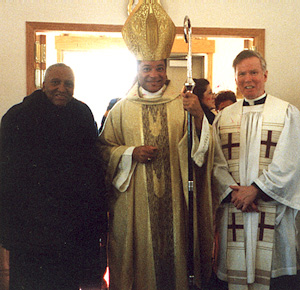 | Most Rev. Joseph Perry, vicar of region VI of the Archdiocese, with his father on the left. It is Holy Thursday, 2002.
|
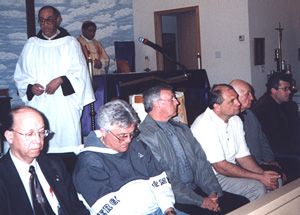 | Father Ken Stewart, OFM Cap., makes ready for the washing of the feet, during Holy Thursday Mass.
|
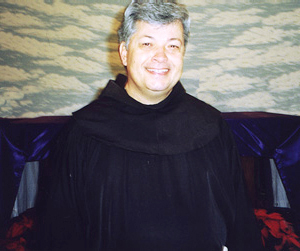 | Father
Charles Faso, OFM, who grew up in St. Agnes Parish, Chicago Heights.
Formerly pastor of St. Peter's, Chicago, he now preaches and gives
missions across the United States.
|
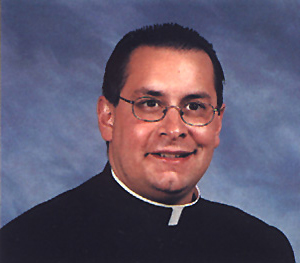 | Especially
in 1999, when San Rocco had no priest assigned, Father Andy Santos
helped out generously. At the time, he was an associate pastor at St.
Lawrence O'Toole, Matteson, Illinois. His grandfather, with the name
Santos, was Greek.
|
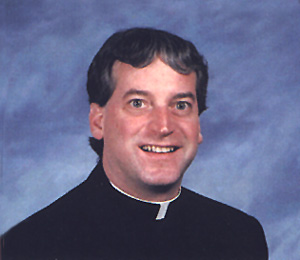 | When
he was in Calumet City, Father Michael Zaniolo helped out at St. Rocco.
He presided at the San Lorenzo Festival Mass, speaking the collects in
Italian. His grandparents were from Venice, Italy. But for this he can
be forgiven.
Currently, Father Zaniolo is chaplain at O'Hare Airport.
|
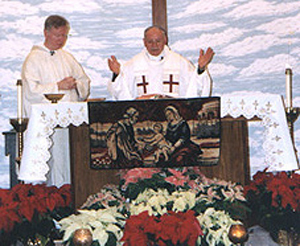 | Here, with hands extended, Father Tommaso Petrongelli is saying the Prayer after Communion, at Christmas Mass during the Day.
|
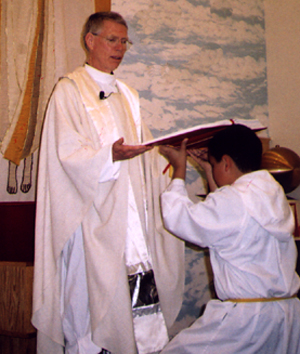 | Father
Charles Baumann, S.J., at the Opening Prayer. He is from Marquette
University in Milwaukee. The server holding the sacramentary is Paul
Rodriguez.
|
|
Priests (Presbyters)
Visiting Priests Over
the past several years, San Rocco has been fortunate to have had
several visiting priests. Whether religious or diocesan, these priests
have presided at Mass, Vespers, and other services. Each one of
them has been welcome, and his service has been appreciated.
In general, visiting priests should be in good standing with their
bishop or religious superior and should be approved by the rector of the
oratory.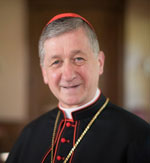 Each visiting priest comes as a presider of the liturgy. All the ministers and the entire congregation
should follow his direction and give him their full cooperation.
By definition, a priest is a presider, who comes in place of the bishop,
Archbishop Blase. That is why priests owe him obedience
and why he owes them support. Religious Order Priests A
religious who is a priest has undergone a period of special training, a
novitiate, during which he is inculturated into his specific
order. This period is usually one year. For some, it is as
long as two years. Religious priests also have a distinctive
habit, clothing which is customary. You are able to recognize Dominicans and Franciscans, for example, by their habit. Religious also take vows; most take the vows of poverty, chastity, and obedience. Benedictines take a vow of stability and a vow of conversion of life. Jesuits
take a fourth vow of obedience to the Pope. Perhaps most
important of all, religious belong to a specific community and have some
kind of common prayer, usually all or part of the Liturgy of the Hours,
the Divine Office. Monks, on the one hand, say all seven hours
together, in common, each day. Religious have greater mobility and
usually just say two hours together, morning and evening prayer.
Jesuits, however, ordinarily do not celebrate the Office in common. Father
Paul Longo, a Comboni Father, helped San Rocco Oratory especially in
1999, when no priest was assigned. His service and friendship were
much appreciated. Although he now lives in Italy, he is always
welcome back home, here in Chicago Heights. One
welcome guest is another religious, Father Tommaso Petrongelli, who has
two brothers living in Chicago Heights, Americo and Italo, as well as
an extended family here. He is fluent in Italian, his native
tongue, with a Roman accent, as well as English. On his extended
visits to San Rocco Oratory, he has celebrated Mass, funerals, and
baptism, providing valuable and appreciated service. In August, 2003,
Most Rev. Joseph Perry came to celebrate Father Tommaso's 40th
anniversary of ordination; it was a solemn and joyful liturgy. Father
Tommaso is a member of a religious order with headquarters in
Rome. He too is always welcome at St. Rocco, anytime.
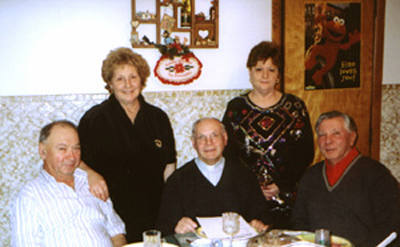 | From the left are Americo Petrongelli, Rosemary, Father Tommaso, Phyllis, and Italo.
|
Diocesan Priests A
diocesan priest, as you know, is also called a "secular" priest.
Normally, he belongs to a specific diocese, which is defined as a
limited area of land or other easily recognized entity. For
example, most of the diocesan priests you know belong to the Archdiocese of Chicago, which includes Cook and Lake County in Illinois. Diocesan
priests do not undergo a novitiate, do not take vows, do not have any
particular habit, and lack a community. They pay taxes and cover
their personal expenses on their own, with a salary or other income,
like most people. They also have no obligation, as monks and
many religious do, to pray the Liturgy of the Hours together, in
choir. Instead, when possible, they pray Lauds and Vespers with
people of their parish or other institution. In
the Eastern churches, diocesan priests are often married; in
the West, this occurs only rarely, usually when a Protestant minister
with a family has been ordained a priest. Since the Council of Nicea,
in 325, throughout the Church, it has been customary to avoid
marriage after ordination. In the various Eastern Churches, it has
always been permitted to ordain married men. This is possible
because diocesan priests do not have a community to which they belong;
they usually live alone. For religious priests, it would be
impossible. Similarly, even in the West, diocesan priests have
adopted children, to raise as their own. The main point of
this history is to make it clear that diocesan priests do not have
anything like the community that religious have. 
Father
J.C. Murray is one of our diocesan priests; hower, for a long period of
time, he was on leave from the diocese, to serve as a naval
chaplain. During that time, he was attached to the military
Ordinariate, the equivalent of a diocese. He came to St. Rocco
after Father Gilligan arrived, at his request. Father Murray was well
received by the people of the community.
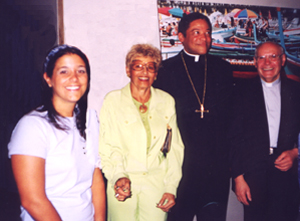 | Here,
at Father Petrongelli's 40th anniversary celebration, from the left,
are Jill Jacobucci, Bev Green, Most Rev. Joseph Perry, and Father
Petrongelli.
|
|














 top
top